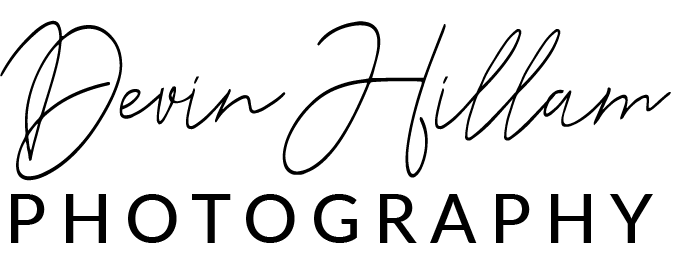Q&A: What is Half Frame & Why Should I Try It?
Discover the Charm of Half-Frame Cameras: A Guide for Beginner and Experienced Photographers
Half-frame cameras are a hidden gem in the world of film photography. While often overshadowed by full-frame models, these compact cameras offer unique advantages that appeal to beginners and seasoned photographers alike. In this guide, we'll explore what makes half-frame cameras special, their benefits, tips for using them, and why even experienced photographers should give them a try.
What is a Half-Frame Camera?
A half-frame camera uses standard 35mm film but captures images at half the size of a typical full-frame exposure. Each image measures 18mm by 24mm, allowing two exposures to fit within the space of one standard frame. This results in twice as many photos per roll—72 exposures on a 36-frame roll and 48 on a 24-frame roll.
Benefits of Shooting Half-Frame Cameras
Double the Photos Per Roll
Beginners can experiment freely without worrying about the cost of film. With twice the exposures, there's more room for trial and error, making it perfect for learning and capturing fleeting moments.Compact and Lightweight
Half-frame cameras are smaller and easier to carry, making them great travel companions. Their portability is ideal for street photography and spontaneous shooting.Creative Compositions with a Unique Aspect Ratio
The 3:2 aspect ratio encourages creativity in framing, offering a fresh perspective compared to full-frame cameras. Plus, the vertical (portrait) orientation of most half-frame models is perfect for today's social media platforms.Cost-Effective
Film and processing costs can add up, but half-frame cameras help you stretch your budget. You’ll get twice the value from every roll of film.Diptych Possibilities
Half-frame cameras naturally lend themselves to diptychs, where two images create a narrative on a single frame. This is a fantastic way to tell stories or juxtapose ideas in your photography.
Why Experienced Photographers Should Try Half-Frame Cameras
For seasoned photographers, half-frame cameras offer a unique challenge that can reignite creative inspiration. The smaller format encourages thinking outside the box—crafting diptychs, experimenting with vertical compositions, or embracing the grainy, vintage aesthetic. Additionally, modern applications, like Instagram-ready vertical shots, make them relevant in a digital era. For professionals accustomed to full-frame sharpness, the half-frame's imperfections can become a creative asset.
Overview of the Pentax Auto 17 - a new Half-Frame Camera in 2024
One standout option for half-frame enthusiasts is the Pentax 17, a compact half-frame camera that’s both stylish and functional. Renowned for its simplicity and reliability, the Pentax 17 features automatic settings that make it beginner-friendly while still offering creative control for experienced users. Its sturdy build and high-quality optics ensure consistent results, making it a go-to choice for anyone exploring this format. Although many say that used half-frame cameras can be had for much cheaper, I highly recommend the camera- it’s light, sharp, and easy to use - and all of that translates into a camera that I take pretty much everywhere with me and since the price per photo is relatively inexpensive, I take significantly more photos of things that I’d ignore if I was packing my EOS 3 full-frame film camera or worse yet, my bulky Hasselblad 500C/M.
How to Use a Half-Frame Camera
Choose the Right Film
Half-frame cameras use standard 35mm film, so any roll will do. Popular choices include Kodak Ultramax 400 or Fujifilm Superia X-tra 400 for balanced exposure and vibrant colors.My favorite films in my Pentax 17 are:
Kentmere Pan 400: A low cost black & white film that I meter at ISO 1600 and ask my lab to push 2 stops (+2). Basic point and shoot cameras won’t have the ability to change metering like that but more advanced cameras will.
Cinestill 800T or Lomography CN 800: Because I pack this camera almost everywhere and because the mountain west can get very cloudy in the winter, , I love higher ISO films in my point and shoot cameras and the Pentax 17 is no different.
Frame Your Shots
Pay attention to the unique vertical orientation and smaller frame size. Experiment with dynamic compositions and diptychs to take advantage of the format.Advance the Film Carefully
Each shot requires a single, precise advance to ensure the exposures align perfectly.Processing and Scanning
Develop half-frame film just like full-frame, but remember you'll get twice the images! Digital scans can be uploaded and shared seamlessly, especially with services that specialize in half-frame film. Choose a lab carefully - not all labs will do half frame exposures but luckily, my lab, The Find Lab, does.
Where to Find Half-Frame Cameras
Vintage half-frame cameras, such as the Olympus Pen series or Konica Auto Reflex, can often be found on online marketplaces like eBay or Etsy. For a modern twist, consider a Pentax 17 for a camera with a lot of controls or if simplicity is what you’re looking for, check out the Kodak Ektar H35 or Holga 135HC.
Final Thoughts
Half-frame cameras are a delightful way to dive into film photography. They’re economical, portable, and creatively inspiring, making them suitable for all skill levels. Whether you're a beginner experimenting with film or an experienced photographer looking for a fresh perspective, half-frame cameras are worth exploring. So grab a roll of film, pick up a half-frame camera, and let your creativity take over!


